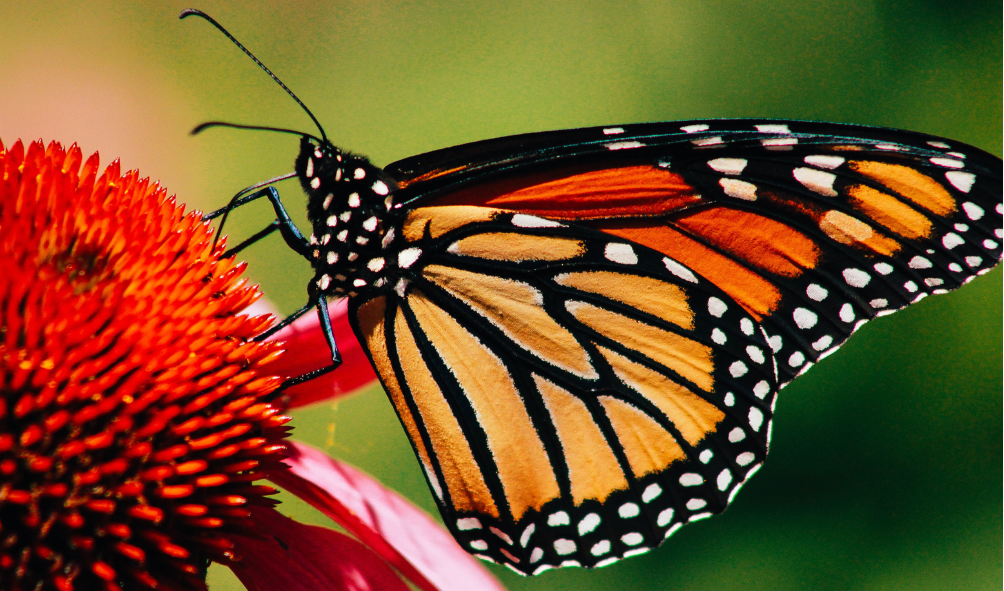
Broken Mirror's Blog
The Silent Extinction: How Our Actions are Killing Endangered Species (Part 2)
The Silent Extinction: How Our Actions are Killing Endangered Species (Part 2)

- Muhammad Ali
Welcome back!
In part two of our blog on endangered species, we're shining the spotlight on three more incredible creatures that are facing the very real threat of extinction.
Butterflies, turtles, and whales are not just beautiful animals, they also play important roles in our ecosystems. Unfortunately, their populations are declining rapidly due to human activities such as habitat destruction, pollution, and climate change.
Let's learn more about these amazing creatures and stay tuned for another upcoming blog post on how we can help by taking small steps!
Goodbye to the Monarchs?
The International Union for Conservation of Nature (IUCN) has quite a few butterfly species on its endangered list. Recently, the migratory Monarch butterfly was added. The name might not ring a bell, but there’s no doubt you know this bright orange butterfly. Just like all butterflies, they’re emblematic creatures hosting incredible powers inside!
Monarch butterflies migrate up to 3000 miles. Before winter hits, they relocate from northern US and southern Canada to Mexico where they congregate by the millions. This migratory journey of theirs is truly a wonder of nature. If you ever want to witness it, you need to head over to the Monarch Butterfly Biosphere reserve in Mexico.
When spring is in the air again, these delicate insects start their journeys back home while taking breaks along the way to lay their eggs on milkweed plants. It’s these plants, and these plants only, that serve as food for caterpillars.
Sadly, climate change, deforestation of Mexican forests and the use of herbicides in the US have resulted in a huge loss of milkweed plants reaping the monarch butterflies of their place to reproduce.
Yet, Canada, the US and Mexico theoretically have the brainpower and means to collaborate with organizations seeking to conserve, restore and sustainably manage this insect’s ecosystems.
Once again, we know what needs to be done. We need action!
Can we turn the tide for Turtles?

Photo: Jesse Schoff
Did you know turtles go way, way, waaay - as in “they lived next to dinosaurs” - back?
Yes, they were already living on “our” planet a 100 or so million years ago. By the way, they can live up to more than 100 years. Can you imagine the things a 100-year-old turtle has seen? These old, mysterious souls deserve more respect from us humans, wouldn’t you agree?
One of the most well-known of the 79 turtle species we know of today, is the marine turtle. Sadly, six out of seven subspecies are threatened with extinction. Once again, we can only point a big, fat finger at ourselves for that. One of the biggest threats turtles face is getting caught in fishing nets. Other threats are the demand for turtle eggs, skin, meat and shells, the destruction of their nests, feeding sites and ocean pollution.
From the moment they hatch, turtles are in a ‘survival of the fittest’ situation. They literally have to crawl for their lives to try and reach the ocean and not get eaten by luring predators; which can be humans or other animals. Scientists calculated that only 1 in 1000 marine turtles make it into adulthood.
We actually know next to nothing about the first years of a turtle’s life. These early years are called the “lost years”, the time between when the hatchlings emerge until they return to coastal waters. This can take up to 20 years!
We ought to have more respect for these ancient beings. We can make a difference, even if we don’t live by or near the ocean. How? Make efforts to decrease your household waste, use of plastic and be mindful of where you buy your fish from.
Woohoo-ing for Whales

Photo: Tod Cravens
There are about 90 different whale species which can be divided into two main groups: the baleen whales and the toothed whales. The biggest difference between these two? How they feed and what’s in their mouth.
The most well-known baleen whales are the humpback whale and the blue whale. The latter is also the largest animal on our planet and can weigh up to 200 tonnes. To give you some perspective, that’s about 33 elephants!
Numbers of this blue giant have decreased tremendously since the exploitation of whales in the 1900s. Of the 225,000 blue whales that were swimming freely in the Antarctic waters less than 3,000 are remaining today. In just 70 years, more than 1,3 million whales were killed in Antarctica alone!
Things are not looking any better for humpback whales either. While they don’t hunt for food most of the year - they live off of their fat reserves for about 5,5 to 7,5 months - tragically, their lives are threatened 24/7.
What about the most famous toothed whales, orcas? Their status of being the no.1 ocean predator, unfortunately, does not guarantee them a pass on the endangered species list. They are, in fact, the no.1 most endangered species of all whales. Commercial whaling, ocean pollution, global warming, marine parks and whale watching - all man-made dangers - are the main factors in their decline in numbers. We need to change how we handle this if we want to see changes for whales.
Is it too late for these animals?
Honestly, it all depends on us. The main factors that are causing these species to thrive are man-made. This means that when we change our behavior, we can make a change!
Remember, any small step forward is meaningful! We all have that power. Let’s make use of it now.
-Team BMF






